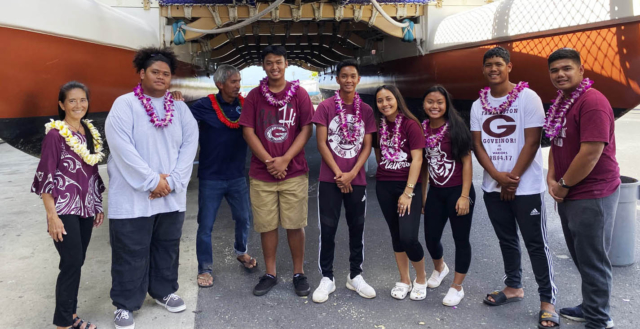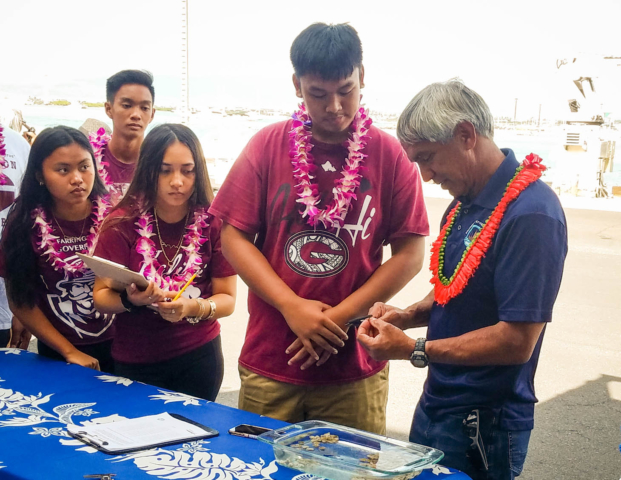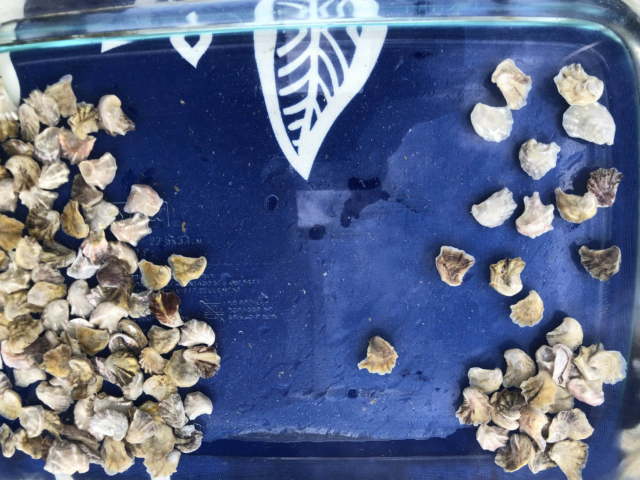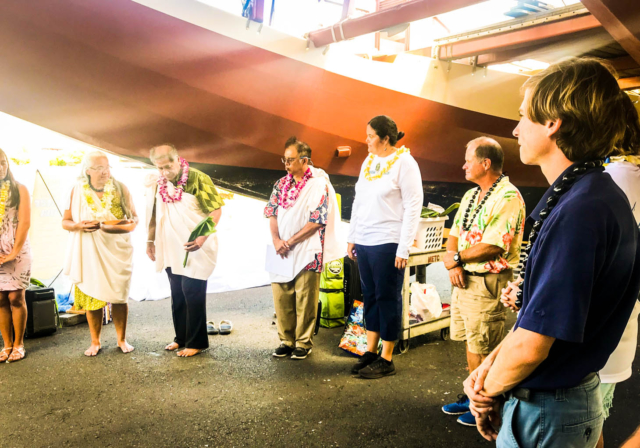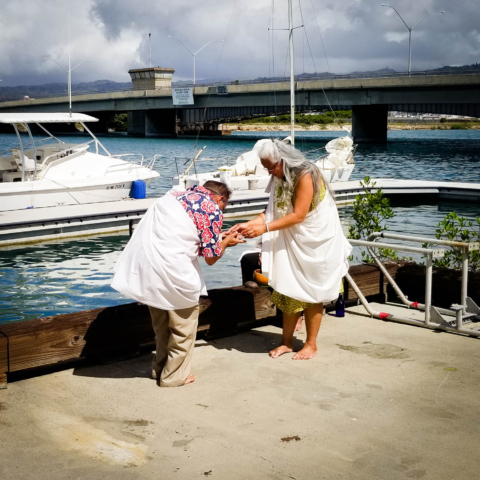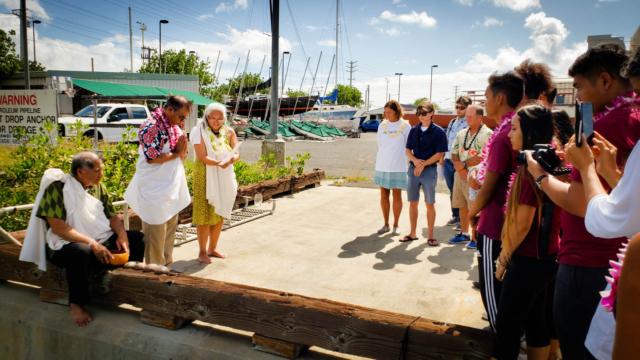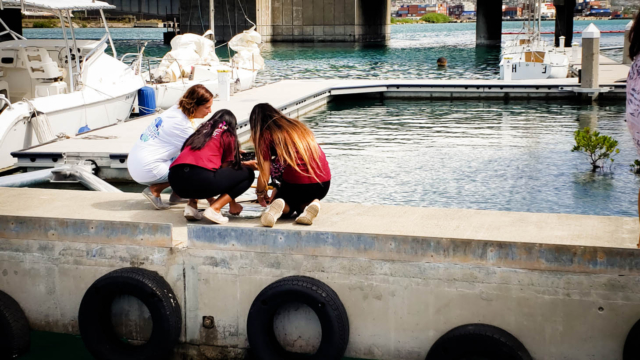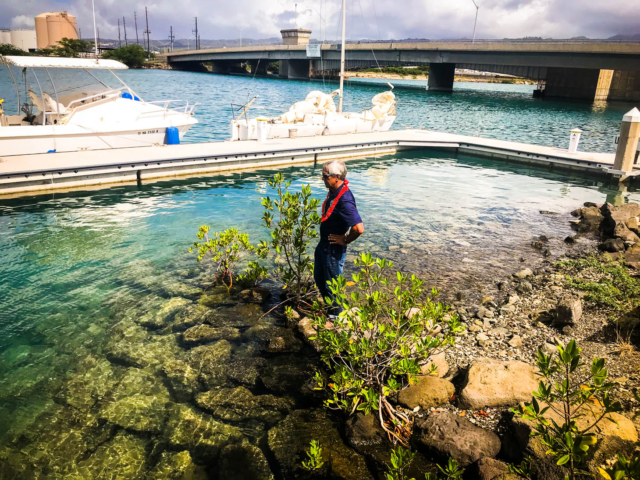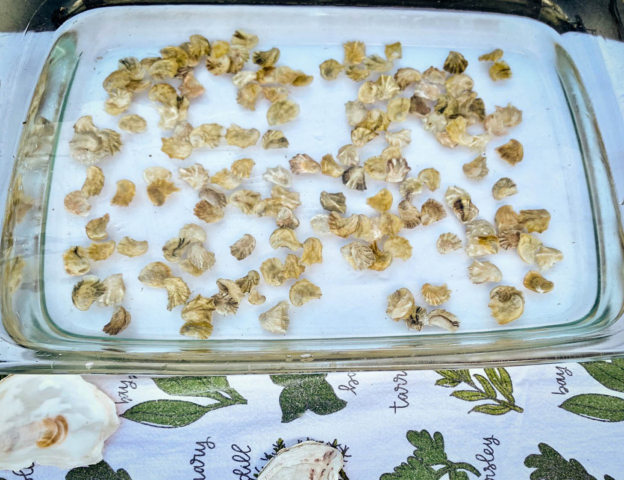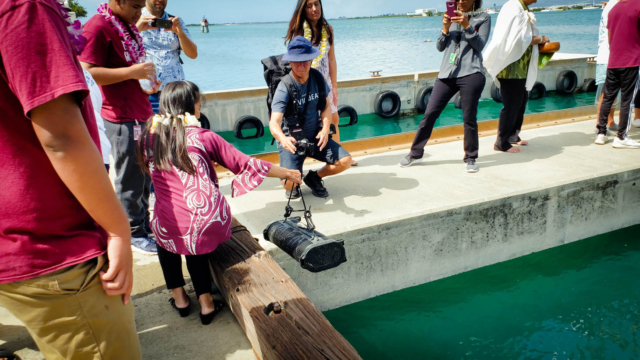
Native Oysters Return to Home of Hōkūleʻa
- Posted on 25 Oct 2019
- In Malama Honua Selects, News, Newsletter, Photo Galleries, Science, Teachers, Updates
By Noelani Kamalu & Diane Ogata
Right now dozens of small native animals are working together toward the monumental task of naturally filtering and cleaning the polluted waters around Sand Island at the Marine Education Training Center.
An intimate ceremony was held dockside at the Marine Education Training Center (METC) this morning to place live oysters in the water at Hōkūleʻa’s home port on Sand Island in Honolulu. As of today, these native oysters are already hard at work naturally cleaning and filtering surrounding waters, a process otherwise known as bioremediation. The oysters will serve as an educational platform for students of all ages who will have the opportunity learn about the oysters and their role in nature, as well as care for the oyster’s growth.
The ceremony was attended by various stakeholders of the project, including members of Oʻahu Waterkeepers Alliance, Polynesian Voyaging Society (PVS), Honolulu Community College, and the University of Hawaii Hilo. Students from Farrington High School‘s marine science classes contributed to the ceremony by measuring and then placing the oysters in the water prior to a ceremonial blessing.
Attendees heard remarks from Maria Haws, who heads the Native Hawaiian Oyster Project at the University of Hilo. Maria spoke of the need to continue to grow aquaculture operations here in Hawaii, as the vast majority of our seafood is still imported. Prior to bringing oysters to Kapalama, oysters from that project were already placed at the Ala Wai, Puʻuloa, and Kaneohe.
Bob Perkins, of METC discussed the evolution of the training center which started as a boat fabrication facility. Current endeavors are now focused towards a shift in educational programs that is being made possible by the various partnerships, including those that made today’s ceremony possible.

Nainoa Thompson (center) and Bob Perkins (right) get caught up on native oysters with Farrington students.
PVS president and master navigator Nainoa Thompson spoke directly to high school students about making choices that benefit the health of our planet, and about how the oyster project is an attempt to allow nature to heal what we as humans cannot.
Following these speakers, a formal ceremony ensued where students placed the oysters in cages that were lowered into the water. Hawaiian prayer, chants and other protocols were offered to bless the project.
About The Project
The oyster restoration project to improve water quality at METC was created through a collaboration with Honolulu Community College’s Marine Education and Training Center (METC), O‘ahu Waterkeeper and the Polynesian Voyaging Society, with support from University of Hawaii Hilo’s Pacific Aquaculture & Coastal Resources Program.
Inspired by the Billion Oyster Project in New York Harbor, which Hōkūleʻa’s crew visited when the canoe sailed to New York City in 2016, the partners hope to encourage bio-remediation of the area’s waters and also to develop an educational program supporting these efforts. The group is working to develop curriculum and experiences for students of all ages around the oyster program.
About Waterkeeper Alliance:
Under the direction of Board President, Robert F. Kennedy Jr., Waterkeeper Alliance is a global movement to protect water resources, currently uniting more than 340 Waterkeeper Organizations and Affiliates in over 40 countries. Their mission is fishable, swimmable, drinkable waters. The organization is committed to finding solutions to reduce land-based pollutants and improve water quality. For more information, please visit www.waterkeepershi.org
About METC:
The Marine Education Training Center, part of Honolulu Community College, is a state of the art marine training center, with the facility having waterfront access to Keehi Lagoon. With four large working bays suited for various types of marine training and education along with classrooms and computer lab, the METC is well positioned to offer a venue for the partnering of programs seeking to find solutions to marine environmental issues along with sustainability of our oceans.
